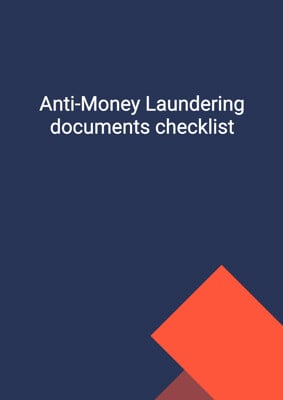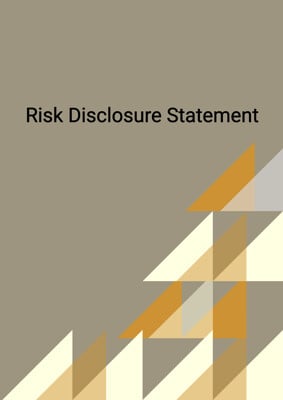How to Tailor the Document for Your Need?
01
Create Document
Fill in the details of the parties. You can click the "Fill with Member’s Information" button to complete it with information saved to your account.
02
Fill Information
Please fill in any additional information by following the step-by-step guide on the left hand side of the preview document and click the "Next" button.
03
Get Document
When you are done, click the "Get Document" button and you can download the document in Word or PDF format.
04
Review Document
Please get all parties to review the document carefully and make any final modifications to ensure that the details are correct before signing the document.
Document Preview
Document Description
The document titled 'Brokerage / Securities Trading Client Agreement' is a legally binding agreement between the customer (referred to as the 'company') and the broker. The purpose of this agreement is to establish a relationship between the two parties for the execution of orders for the purchase or sale of securities. The agreement outlines the terms and conditions that both parties must adhere to.
The first section of the document, titled 'The Account,' confirms that the information provided in the account opening form is complete and accurate. The broker is authorized to conduct credit inquiries to verify the information. The broker is also required to keep the account information confidential, but may disclose it to regulatory authorities if necessary.
The second section, titled 'Laws and Regulations,' states that all transactions in securities will be conducted in accordance with applicable laws, rules, and regulatory directions. The broker's actions in compliance with these laws and regulations will be legally binding on the customer.
The third section, titled 'Transaction,' outlines the responsibilities of both parties in executing transactions. The broker will act as the customer's agent unless otherwise indicated. The customer is responsible for notifying the broker if a sale order involves securities that they do not own. The customer is also responsible for paying the broker's fees, commissions, charges, and disbursements, as well as applicable levies, trading fees, clearing fees, and stamp duties.
The fourth section, titled 'Applications to Issue of New Listed Securities,' authorizes the broker to apply for new listings of securities on the customer's behalf. The customer must meet certain criteria and provide necessary authorizations and warranties. The customer may also request a loan from the broker to finance the subscription of new securities.
The fifth section, titled 'Order and Order Recording,' explains how instructions for transactions can be given to the broker. Instructions can be given by telephone, facsimile, or in writing. The broker may refuse to accept instructions without giving a reason and may record telephone conversations for record-keeping purposes.
The sixth section, titled 'Client Identity/Ultimate Beneficiary,' requires the customer to provide information about the ultimate beneficiary and originator of instructions for transactions. This information may need to be disclosed to regulators and other authorities.
The seventh section, titled 'Safekeeping of Securities,' addresses the safekeeping of securities held by the broker. The securities may be registered in the customer's name or the broker's nominee. Dividends and other benefits arising from the securities will be credited to the customer's account.
The eighth section, titled 'Moneys in the Account,' explains how cash held for the customer will be handled. Cash will be credited to a client trust account and will be considered payment to the customer.
The ninth section, titled 'Set-Off and Lien,' grants the broker a general lien on all securities, receivables, moneys, and other property held by the broker for the customer. This lien serves as security for the customer's obligations under the agreement.
The tenth section, titled 'Discretionary Account,' authorizes the broker to execute transactions on the customer's behalf in a discretionary account. The customer acknowledges that they are responsible for settlement and can revoke the broker's authority in writing.
The document also includes sections on termination, notices, amendments, liability and indemnity, material changes, personal data privacy, risk disclosure, interpretation, law, and jurisdiction.
Overall, this agreement is essential for establishing the rights and obligations of both the customer and the broker in executing securities transactions.
How to use this document?
To use this document effectively, follow these steps:
1. Provide accurate and complete information: Fill out the account opening form with accurate and up-to-date information. Inform the broker of any material changes to the provided information.
2. Comply with laws and regulations: Ensure that all transactions are conducted in accordance with applicable laws, rules, and regulatory directions. Familiarize yourself with the rules of the exchange and the clearing house.
3. Give clear instructions: Provide instructions for transactions in writing, by facsimile, or by telephone. Be aware that the broker may refuse to accept instructions without giving a reason.
4. Understand fees and charges: Review and understand the broker's fees, commissions, charges, and disbursements. Be aware of any applicable levies, trading fees, clearing fees, and stamp duties.
5. Safeguard securities: If the broker holds securities for safekeeping, ensure that they are registered in your name or the broker's nominee. Monitor dividends and other benefits arising from the securities.
6. Maintain sufficient funds or securities: Ensure that you have sufficient cleared funds or deliverable securities to settle each transaction. Failure to do so may result in the broker selling purchased securities or borrowing/purchasing securities to settle the transaction.
7. Consider new listings: If you wish to subscribe for new listings of securities, provide the necessary authorizations and comply with the conditions stated in the prospectus. Understand the terms and risks associated with subscribing for new securities.
8. Review statements and reports: Regularly review the contract notes, daily statements, execution reports, and monthly statements provided by the broker. Object in writing within the specified time if you identify any discrepancies or mistakes.
9. Protect personal data: Understand that while the broker is expected to keep account-related information confidential, they may be required to provide it to regulatory authorities. Read and acknowledge the notice on personal data privacy.
10. Understand risks: Be aware of the risks associated with securities trading, including price fluctuations and the possibility of losses. Understand the risks of leaving money and securities in the broker's safekeeping. Clarify all commission, fees, and charges before trading.
11. Seek legal advice if needed: If you have any doubts or concerns about the agreement or its implications, consider seeking legal advice to ensure you fully understand your rights and obligations.
By following these steps, you can effectively use this document to establish a clear and mutually beneficial relationship with the broker for securities trading.
Not the right document?
Don’t worry, we have thousands of documents for you to choose from:










